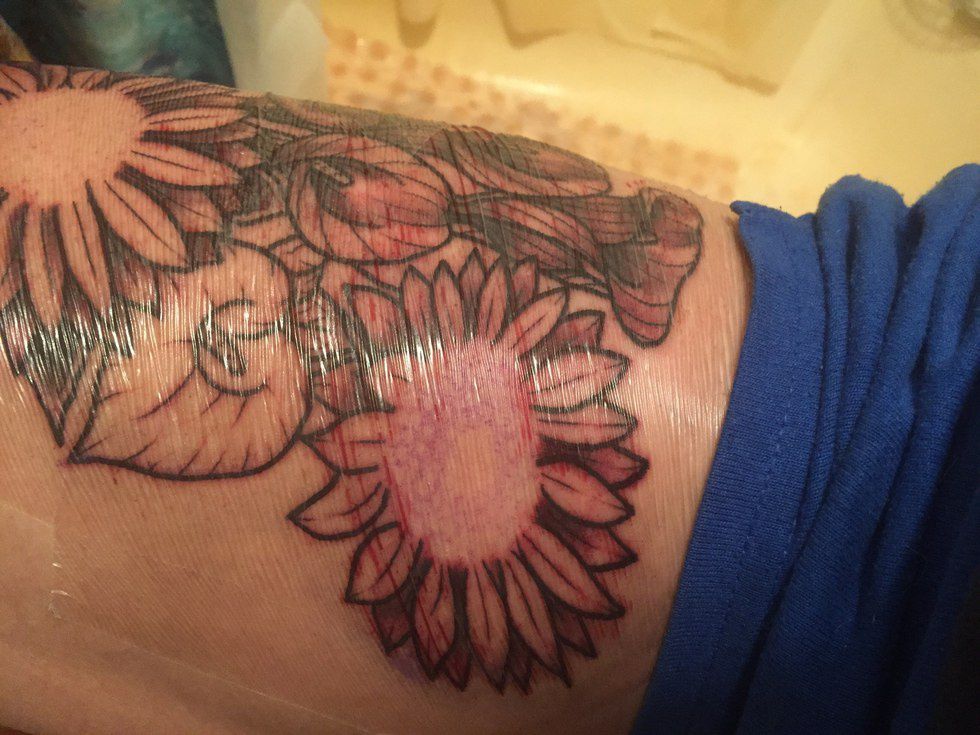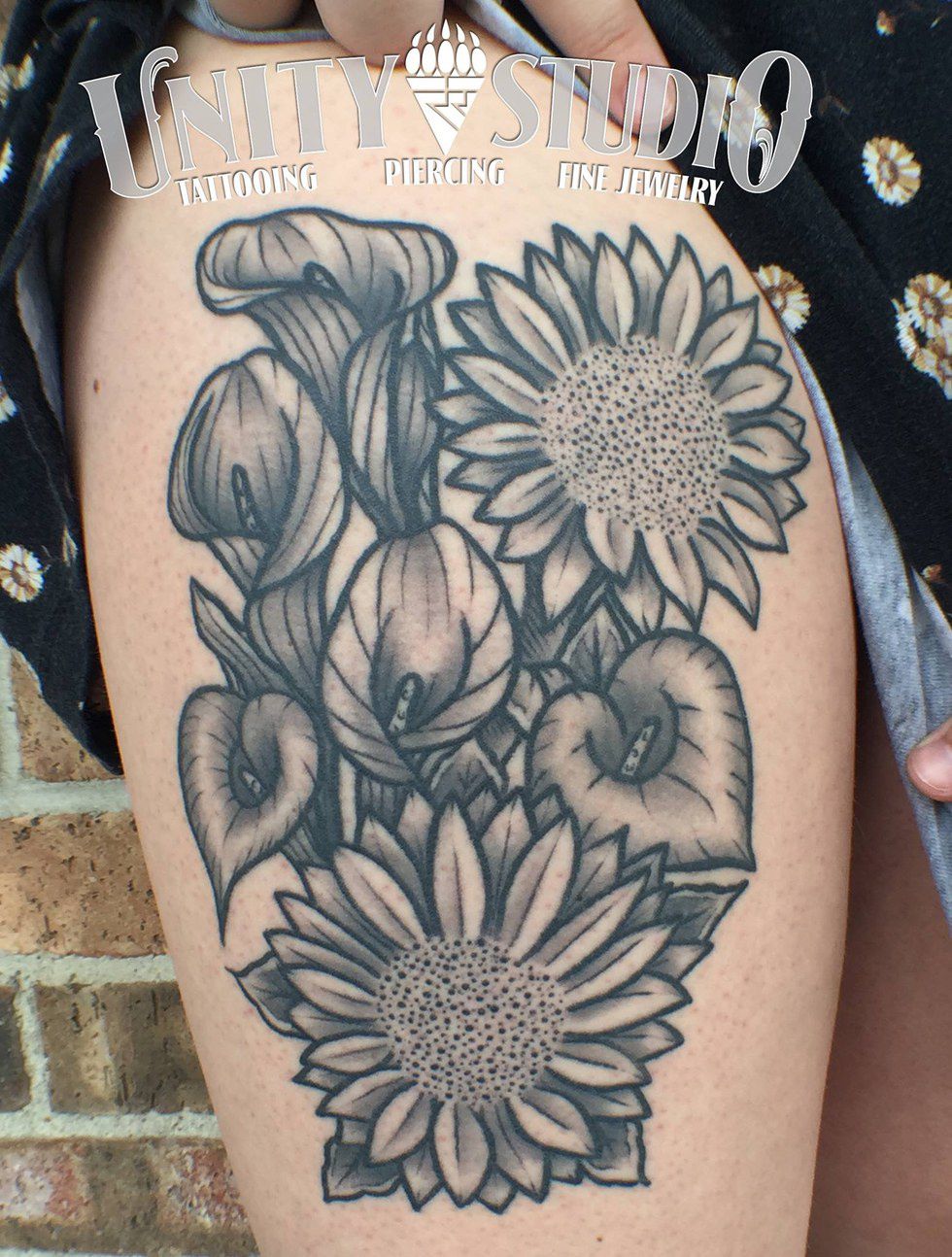The layers of skin are the Epidermis, the Dermis, and then the Hypodermis.
The epidermis is the top thin layer of skin that we actually see. The epidermis is where we generate new skin cells. These cells produce melanin which gives our skin color. The epidermis also contains special cells that are part of the immune system to help protect you when you cut cuts.
The Dermis is the next layer of the skin and is much thicker than the other layers. The dermis is in charge of of making sweat, growing hair, making oils, bringing blood (and thus nutrients) to your skin, and also has the nerve endings.
The Hypodermis layer is the bottom layer. It is important in our skin because it has tons of connective tissue that holds our dermis to the muscle and bones, controls body temperature, and stores fat.
We can do many things with our skin, like tattoos. Where do tattoos go in our skin? What happens when we tattoo our skin?
The basic mechanic of a tattoo is a needle repeatedly stabbing into your skin. The process itself damages the epidermis, the epidermal-dermal junction, and the topmost layer of the dermis. These cells are then homogenized. The ink then diffuses into the upper dermis. The ink is absorbed by keratinocytes and phagocytic cells.The response to the damage is bleeding, swelling, and an immune response occurs. The skin is then repaired and regenerated by fibroblasts, which form scar tissue skin.
At one month, the epidermal-dermal junction is repairing and the bottom epidermis layer contains the ink. The phagocytic cells containing ink are along the epidermal-dermal junction on the dermis below the new granulation tissue (scar tissue). Ink is being disposed of through the epidermis with ink in the replaceable keratinocytes cells, macrophages and fibroblasts.
2-3 months in, the epidermis’ bottom layer is restored, and no ink is lost through the epidermis any longer. Ink is present now in dermal fibroblasts, and these fibroblasts are located under fibrous tissue (older scar tissue). Connective tissue now surrounds and tangles the fibroblasts keeping them in place.






















